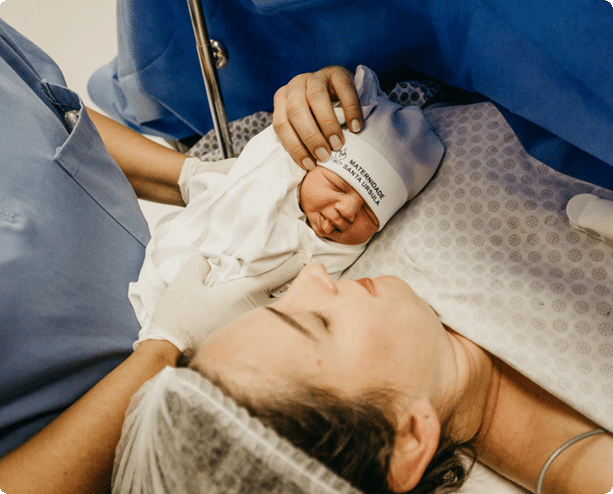Cerebral Palsy Causes
Cerebral palsy (CP) isn’t just a single condition. Rather, it’s a group of disorders targeting a person’s mobility and ability to maintain normal posture and balance. Severity ranges from mild to severe, and it tends to be a lifelong condition without a cure. It can impact a person’s quality of life, brain development, and overall health.
Home > What Is Cerebral Palsy? > Cerebral Palsy Causes
- Last Updated Date: March 24, 2025
The U.S. Centers for Disease Control and Prevention (CDC) state cerebral palsy is the most common motor disability affecting children. It impacts 1 in every 345 children and is more common in children born preterm or with low birthweight. In addition, the Cerebral Palsy Foundation notes that, across the world, 17 million people have cerebral palsy and that 1 in every 2 people who have this condition live with chronic pain.
For children that develop CP, there may be a long-term need for care, including the use of occupational therapy, physical therapy, speech therapy, and assistive solutions for other intellectual disabilities or physical limitations. Understanding this condition and what causes it may help parents recognize the need for treatment when needed.
What causes cerebral palsy? There are several possible causes for cerebral palsy that fall under two distinct categories: congenital and acquired.
Congenital Cerebral Palsy
According to the CDC, congenital cerebral palsy accounts for between 85% and 90% of cases. Congenital CP occurs due to abnormal brain development or damage to the brain in utero or during the birth process. Unfortunately, most of the time, a specific cause of congenital CP cannot be determined. However, there are certain known risk factors for developing the condition.

A newborn weighing less than 5 ½ pounds is considered to have low birth weight. Babies with low birth weight are at an increased risk of CP. Those weighing less than about 3 pounds, 3 ounces are considered to have very low birth weight, and have an even higher risk of CP.
Premature birth, defined as being born before the 37th week of pregnancy, increases the risk of CP. Babies who are born before 32 weeks may have a further increase in risk. While significant improvements in NICU care have helped to decrease the risk of CP in premature infants, they are still at a higher risk than babies born at full term (37 weeks of pregnancy or beyond).
Multiple births, including twins, triplets, and higher counts, are also at a higher risk for developing CP. Such birth risks tend to be higher because many of these children are born at a lower-than-average birth weight or born early.
Some types of infections during pregnancy can increase the risk of CP. This is believed to be related to inflammation that occurs as the body responds to the infection. Certain proteins that are part of this response may cause damage to a developing brain. Some types of infections that are associated with increased CP risk include rubella, chickenpox, cytomegalovirus (CMV), and bacterial infections of the amniotic membrane, the placenta, or the mother’s pelvis. If the mother has a fever during pregnancy or delivery, this could indicate an infection that may put the baby at risk.
Asphyxia, or a lack of oxygen, may also lead to CP. Lack of oxygen may occur if the umbilical cord wraps around the child’s airway. It may also be due to a rupture or detachment of the placenta. The child suffers a lack of oxygen to the brain, leading to complications and CP in many situations.
There is an increased risk of CP development in children conceived through in vitro fertilization or other infertility treatments. Not all children conceived in this manner develop CP, but the risk is higher. It’s believed that much of this increased risk is due to the higher incidence of multiple births in these children, although research is still investigating the mechanisms behind this link.
Genetics may be a factor in cases where there is no other clear cause of cerebral palsy. There is evidence to suggest genetics plays a role in CP in some children. If there is a history of CP in the family, that may increase the chance of it developing in a child.
Other situations may cause cerebral palsy as well. Unfortunately, in some cases, it’s simply not possible to know what caused it to occur.

Acquired Cerebral Palsy
Acquired cerebral palsy is a second type. This type accounts for a much smaller number of cases. It occurs due to damage to the brain occurring more than 28 days after the child’s birth. Often associated with infection or a head injury, it may be CP that becomes noticeable later in the child’s development. Parents may notice the development of this condition in the months following the cause.
Causes of Acquired CP
It is not easy to pinpoint the cause of all cases of acquired cerebral palsy. However, some of the most common causes include the following:
Infections:
Infections that impact the brain are a common cause of acquired CP. Infections include meningitis, an inflammation of the protective membranes covering the brain and spinal cord, and encephalitis, an inflammation of the active tissues in the brain typically causing swelling.
Head injury:
Any direct injury to the head may cause brain damage, leading to the development of cerebral palsy. A head injury may include injuries that create a rapid forward to backward motion causing the brain to slam into the skull. It may also be due to blunt force trauma to the head, causing damage to the brain. Common causes of head injuries include car accidents, significant falls, and child abuse.
Lack of oxygen:
Asphyxia may also be a cause of acquired CP. Lack of oxygen may occur in any situation where there is a lack of blood flow to the brain for any reason. For example, blood flow to the brain may be interrupted by a blood clot or a hemorrhage. Other underlying health conditions such as heart defects or blood vessel damage that limit oxygen-rich blood flow to the brain can be additional causes.
Unfortunately, as with congenital development, knowing what caused the onset of acquired CP in many children is not always possible.
Timing of CP
As noted, as many as 90% of all cerebral palsy cases are congenital CP, meaning that the causative brain injury occurs before birth or during delivery. Acquired CP, which begins after birth, is less common. In order to determine which type a child has, the timing of when symptoms begin is a significant clue. For example, if a child seems okay at birth but parents later notice muscle tone problems when they begin to walk, this may have been acquired CP. If symptoms are apparent earlier on, congenital CP is more likely. However, keep in mind that some of the symptoms of CP might not be easy to spot right away, and some cases of congenital CP are not diagnosed until later in the child’s development.
Consider the types of cerebral palsy and how this plays a role in determining the cause. There are four main types:
- Spastic cerebral palsy: About 80% of people have this form, according to the CDC. Those with this condition typically have increased muscle tone, which means their muscles are stiff, and their movement can be challenging or awkward. In one form, spastic hemiplegia, only one side of the body has such tone differences.
- Dyskinetic cerebral palsy: In this condition, a person may have trouble moving their hands, arms, legs, or feet. Dyskinetic cerebral palsy makes walking and sitting difficult. Sometimes, movements are uncontrolled.
- Ataxic cerebral palsy: In this form, a person has trouble with coordination and balance. Ataxic cerebral palsy makes them unsteady when trying to walk. Some may have difficulty with quick movements or tasks like writing that require a significant amount of coordination.
- Mixed cerebral palsy: In this case, the child may have symptoms of several other forms.
Parents understandably want to know what caused their child’s condition. However, it isn’t always possible to determine the exact cause of a child’s CP. In many cases, we are simply never able to be certain why this happened.
If the timing of symptoms indicate that the brain injury leading to CP may have occurred during delivery, then it’s possible that a healthcare provider made mistakes that led to the child’s condition.
Preventing CP
The cause of cerebral palsy is not fully understood. While doctors can perform a physical exam and look for the part of the brain with damage through a CT scan, this typically can only happen after the child is born. It’s difficult to determine exactly how brain development can go wrong and lead to CP, or how we might be able to stop this. However, there are a few steps that pregnant women can take to support their baby’s brain health.
Prioritize health
Though the cause of CP is not fully understood, it’s believed that the mother’s health during pregnancy plays a role. Taking steps to protect your health during pregnancy may reduce the risk of CP. This can include getting vaccines for certain conditions that could harm the baby, and getting treatment for any infections that develop during pregnancy.
Risk for preterm delivery
Some women may be at a higher risk for preterm delivery, such as if they have underlying health conditions, have had preterm births prior, or are pregnant with multiple babies at once. Although not every premature birth can be prevented, it’s important for a pregnant mother to do whatever she can to reduce the risk. Working closely with your healthcare team and following all medical instructions can help to accomplish this.
Minimize birth complications
Certain complications of pregnancy may increase the risk of CP. Ensuring that you get adequate prenatal care, including going to all of your visits and getting recommended screenings, may help reduce the risk. In addition, mothers should follow their doctors’ instructions regarding care for any condition that develops during pregnancy.
It’s also important to do your best to minimize the risk for acquired CP, which is any type of onset after 28 days of birth.
Parents may be able to reduce these risks by:

Learning how to keep the baby safe and prevent injury:
Keep medications away from young children (1 out of every 150 two-year-olds visit the emergency room for accidental medication overdoses annually, according to the CDC). Also, learn how to minimize the risk of sleep-related infant deaths and use car safety seats properly. Look for signs of child maltreatment or child abuse.

Watch for jaundice:
Jaundice is a yellowing color of the skin often noticed at birth. It occurs when bilirubin, a chemical in the body, builds up in the bloodstream. In severe forms of jaundice, or in cases where it does not receive necessary treatment soon enough, there is an increased risk for kernicterus, which can trigger CP.

Vaccinate your child:
Work with your child’s doctor to ensure they receive proper vaccinations according to vaccine schedules. Vaccines prevent many diseases that can lead to brain damage and CP.
Remember that even in these situations, it may not be possible to prevent all forms of CP. That is why it’s essential to monitor your child’s development over time, especially right after birth, to look for any signs of a health problem or indications of CP, such as those described here. A proper diagnosis is critical to protecting your child’s future.
What Can You Do If You Suspect Cerebral Palsy in Your Child?
It’s not possible to diagnose this condition without fully understanding what happened to your child before birth, during birth, or in the months after. Yet, you are not alone in this process. Our team has legal support available to you if you suspect your child was put at risk.
Contact us at Birth Injury Center to schedule a free legal consultation if you think your child’s cerebral palsy occurred due to medical negligence. Don’t wait until it’s too late. Learn more about what we can do to help you with your child’s care and needs.

Written by:
Birth Injury Center Team
The Birth Injury Center aims to create informational web content and guides to help women and their families seeking support and guidance for birth injuries caused by medical negligence. All of the content published across The Birth Injury Center website has been thoroughly investigated and approved by medical expert Natalie Speer, RNC-OB, Attorney Ryan Mahoney.


